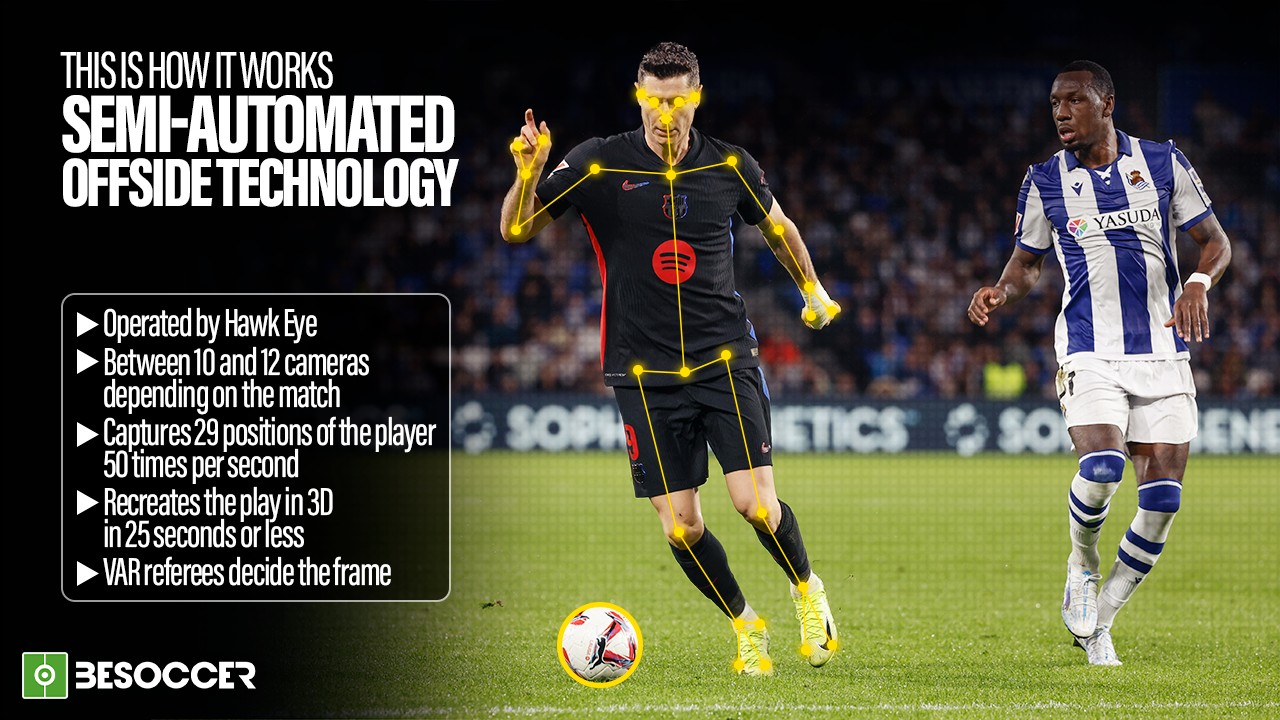How the semi-automated offside system that outraged Barcelona works

Barcelona fell to a 1-0 defeat at Real Sociedad on Sunday as they had a Robert Lewandowski goal controversially disallowed due to the semi-automated offside system. This technology was first used in the 2023 Spanish Super Cup and was later installed in La Liga: how does it work?
10 months ago
In January 2023, the RFEF applied a novelty for the Spanish Super Cup: the semi-automated offside. Real Madrid faced Valencia and Real Betis, Barcelona in the semifinals in which 'Merengues' and 'Cules' won to meet in a 'Clasico' that the Catalan side, with Xavi Hernandez on the bench, won 1-3. The day before the first knockout rounds, the Federation explained the technology that FIFA had already integrated.
The institution did so through a video of 1 minute and 46 seconds in which it summarized the dynamics in which there would be 12 cameras that would detect 29 points of the player's body that were in a potential illegal position. The selected zones would be all those that are taken into account when determining these infractions with 50 detections per second. In the event of an overtaking player, a warning would be issued to the referees by means of artificial intelligence.
Then, the referees in the VOR room would make sure, through their screens, that both the line drawn and the frame chosen at the moment of the pass are correct. Once this has been certified and the decision confirmed on the pitch, a 3D recreation generated, in a maximum of 25 seconds, by the 'Hawk Eye' software, the company that was contracted for these tasks in a four-season contract, that is, until 2027-28, would be broadcasted.
Two of the limits with which the offside detection system works are in the toe of the players' boots. This is where the controversy surrounding Lewandowski's goal lies: both a large section of the fans and Hansi Flick think that the technology confused the Pole's feet with those of Nayef Aguerd, the defender who was covering him.
The institution did so through a video of 1 minute and 46 seconds in which it summarized the dynamics in which there would be 12 cameras that would detect 29 points of the player's body that were in a potential illegal position. The selected zones would be all those that are taken into account when determining these infractions with 50 detections per second. In the event of an overtaking player, a warning would be issued to the referees by means of artificial intelligence.
Then, the referees in the VOR room would make sure, through their screens, that both the line drawn and the frame chosen at the moment of the pass are correct. Once this has been certified and the decision confirmed on the pitch, a 3D recreation generated, in a maximum of 25 seconds, by the 'Hawk Eye' software, the company that was contracted for these tasks in a four-season contract, that is, until 2027-28, would be broadcasted.
Two of the limits with which the offside detection system works are in the toe of the players' boots. This is where the controversy surrounding Lewandowski's goal lies: both a large section of the fans and Hansi Flick think that the technology confused the Pole's feet with those of Nayef Aguerd, the defender who was covering him.







Comments